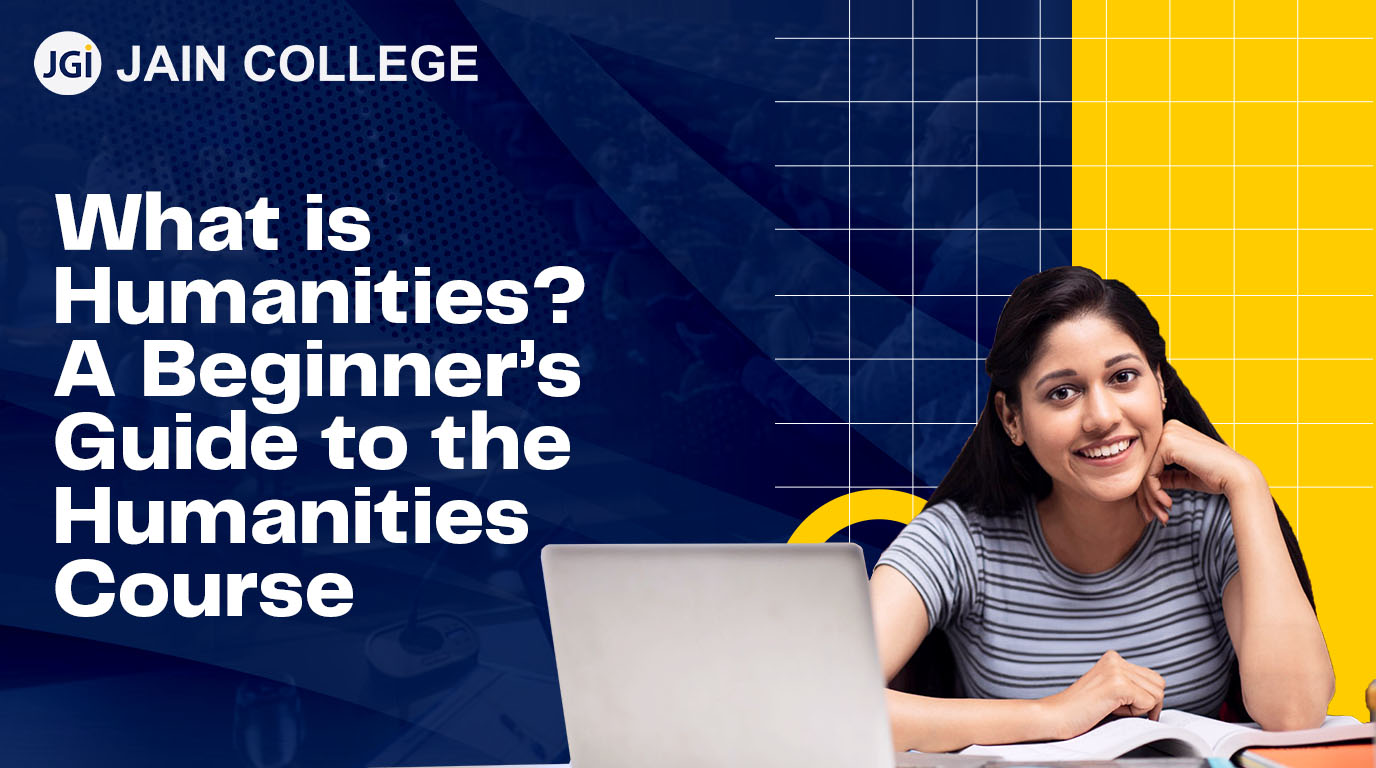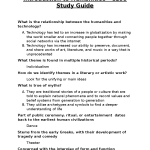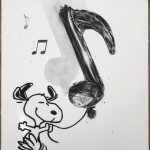Introductory humanities courses are pivotal in shaping the academic journey of first-year students, offering them their first deep dive into the rich world of arts and humanities. At institutions like Harvard, these courses serve not just as a gateway to specialized knowledge but as a crucial platform to stimulate critical thinking and creativity. Given the troubling trend of declining enrollment in humanities fields nationwide, there is a renewed emphasis on crafting engaging courses that resonate with students’ interests and aspirations. The new initiatives led by Dean Sean Kelly are a testament to this commitment, aiming to rekindle students’ passion for humanities education and explore fundamental questions about human existence. As students embark on their college experience, these introductory courses play a vital role in helping them connect with their potential and find meaning in the vast tapestry of human culture.
Launching into foundational courses within the realm of arts and humanities, first-year students are presented with unique opportunities to explore various disciplines that enrich their understanding of the human experience. Refreshing their approach, educational bodies aim to attract a diverse body of learners with relevant topics that address contemporary issues and timeless questions alike. As curricular offerings evolve, faculty members strategically develop innovative pathways for students to appreciate the nuances of cultural studies, literature, and philosophy. This shift not only offers a remedy for the declining interest in humanities but also enhances the overall academic landscape. Through these introductory sessions, colleges envision fostering a solid appreciation for the value of humanities education that extends beyond campus.
The Importance of Introductory Humanities Courses
Introductory humanities courses play a crucial role in shaping a students’ academic journey, especially in their first year of college. These courses serve as a bridge to deeper cultural understanding and critical thinking, providing students with the foundational tools required to engage meaningfully with complex texts and ideas. They often highlight the intrinsic value of exploring human experiences through literature, philosophy, and art, encouraging students to connect with diverse perspectives that enrich their educational experience.
Moreover, as universities grapple with declining enrollment in humanities disciplines, effective introductory courses become more essential than ever. By rethinking course structures and topics, institutions can attract students who might otherwise shy away from the humanities. Engaging first-years in discussions that resonate with contemporary issues not only sparks their interest but also fosters a long-lasting appreciation for the arts and humanities that can influence their future academic and career choices.
Tackling Declining Enrollment in Humanities
The challenge of declining enrollment in humanities programs is a pressing concern for educators and administrators alike. Many universities have observed that only a fraction of students enter with a clear interest in pursuing degrees in arts and humanities, and a significant number shift their focus during their college years. This trend emphasizes the need for innovative approaches to curriculum design, particularly in introductory courses that are often the first exposure students have to these disciplines.
To counter this trend, initiatives like the one led by Dean Sean Kelly at Harvard aim to revamp the introductory humanities curriculum. By offering nine new courses specifically designed to engage first-year students, the initiative hopes to create a more inviting atmosphere that showcases the relevance of humanities education. Courses derived from discussions on contemporary societal issues, cultural narratives, and pressing human questions can stimulate interest and draw students back to the humanities agenda.
Innovative Course Designs in the Arts & Humanities
Innovative course designs are pivotal in redefining how introductory humanities education is delivered. For example, integrating contemporary topics into traditional frameworks allows students to see the relevance of the humanities in today’s cultural landscape. Courses like “Cultures in Context” and “Migration and Border Crossing in Film and Photography” utilize current events to foster discussions about identity and culture, making learning relatable and urgent for students.
Additionally, blending disciplines—as seen in the course co-taught by Laura van den Berg and Neel Mukherjee—combines critical analysis and creative writing to engage students on multiple levels. This interdisciplinary approach not only enhances students’ appreciation of literature but also develops their analytical skills, enriching their overall educational experience within the arts and humanities.
The Role of Professors in Engaging Students
Professors are at the heart of engaging students in the arts and humanities, particularly through the delivery of introductory courses. Their expertise and passion can inspire students to appreciate complex concepts such as morality, identity, and culture. They have the potential to transform abstract theories into accessible, relatable discussions that resonate with first-year students, making the study of humanities much more appealing.
Moreover, by employing various teaching methodologies—such as interactive discussions, multimedia resources, or real-world applications—faculty can create an enriching learning environment. This adaptability not only accommodates diverse learning styles but also invites students to become active participants in their education, thereby fostering a deeper connection to the subject matter.
Cultural Relevance and the Future of Humanities
As society evolves, so does the cultural relevance of the humanities. The capacity of introductory courses to address contemporary issues—such as race, gender, and technology—can significantly enhance students’ understanding of their world. By placing importance on the relationship between the humanities and current societal challenges, educators can help students realize the lasting impact these fields have on social discourse.
The future of humanities education hinges on its ability to adjust and integrate these cultural topics while maintaining core philosophical inquiries. Advocating for the significance of essential humanities texts and concepts can attract a new generation of students who see the value in exploring human experiences and societal structures, ensuring the continued relevance of these fields in higher education.
Fostering a Vibrant Humanities Culture
Cultivating a vibrant humanities culture is essential for attracting students and enriching their educational experience. Engaging first-year students through dynamic courses helps to create a sense of community and belonging within the humanities department. This initiative not only emphasizes academic excellence but also builds a supportive network where students feel they can explore their interests without judgment.
Additionally, fostering inclusivity and diversity within the humanities curriculum serves to enhance its vibrancy. By showcasing a range of voices and perspectives, introductory courses can become a platform for critical dialogue about social issues, ultimately making the study of arts and humanities more relevant and appealing to a broader audience.
Learning through Storytelling in Humanities Education
Storytelling is an invaluable tool in humanities education, providing a compelling method for students to engage with complex ideas and narratives. Through courses that prioritize narrative techniques and critical reading, students learn how to articulate their thoughts and comprehend the stories that shape cultural identities. This process is essential not only for understanding literature but for developing empathy and broader worldviews.
Moreover, the enhancement of storytelling skills contributes significantly to personal and professional development. The ability to tell a story is foundational to communication, whether in writing, speaking, or even visual arts. An emphasis on storytelling within introductory courses can empower students to share their own experiences and cultivate a deeper connection with the material, ensuring that they appreciate the transformative power of the humanities.
The Canon Wars and Their Impact on Course Design
The how and what of the Canon Wars have influenced the landscape of humanities education, particularly in the design of introductory courses. Debates over which texts should be considered ‘essential’ have complicated how educators approach curriculum development. While these discussions have broadened the scope of literature and art taught in classes, they have also led to a hesitance in presenting a clear and compelling path for first-year students.
This ambiguity can deter students from fully engaging with the material, as they may feel overwhelmed by an array of choices and interpretations. Thus, it becomes imperative for educators to find a balance between inclusivity in course content and the establishment of a cohesive framework that allows students to grasp the fundamental concepts of humanities.
Redefining Greatness in Humanities Education
The concept of ‘greatness’ in humanities education requires a redefinition that accommodates the shifting cultural paradigms of our times. Rather than adhering strictly to traditional texts considered great in the past, it is crucial to engage with diverse voices that reflect current socio-political contexts. This approach not only challenges the status quo but also opens the door to a more comprehensive exploration of what constitutes significant contributions to human culture.
In turn, this redefinition can inspire first-year students to think critically about the works they encounter and understand the relevance of those works to their own lives. By instilling a more nuanced perspective on greatness—one that is inclusive, diverse, and reflective of contemporary issues—humanities education can cultivate a love for learning that resonates throughout students’ academic journeys.
Frequently Asked Questions
What are the benefits of taking introductory humanities courses in university?
Introductory humanities courses provide students with critical thinking skills, enhance their understanding of human culture, and foster a deep appreciation for the arts and humanities. These courses often encourage students to engage with fundamental questions about life, identity, and society, making them invaluable for personal and intellectual growth.
How do introductory humanities courses help combat declining enrollment in these fields?
The newly designed introductory humanities courses aim to engage first-year students with compelling content that captures their interest, addressing the declining enrollment in humanities education. By focusing on contemporary issues and relevance, these courses seek to demonstrate the intrinsic value of the humanities, motivating students to explore these disciplines further.
What types of topics are covered in introductory humanities courses?
Introductory humanities courses cover a diverse range of topics, including philosophy, literature, art, film studies, and cultural analysis. For example, courses may explore themes in literature such as identity and consciousness or examine societal issues through film and photography, creating a rich understanding of human experiences.
How does the Harvard humanities initiative introduce students to the arts and humanities?
The Harvard humanities initiative introduces students to the arts and humanities through innovative first-year courses that emphasize engaging content. By featuring contemporary themes and interactive presentations, the initiative hopes to attract and retain student interest in humanities fields, countering the recent trends of declining enrollment.
What makes the new introductory humanities courses different from traditional ones?
The new introductory humanities courses differ from traditional offerings by focusing on topics that resonate with students’ current interests and experiences. These courses aim to move beyond the ‘Canon Wars’ of past decades to encourage inclusive discussions and present material that emphasizes the relevance of humanities studies in today’s society.
Can introductory humanities courses prepare students for future careers?
Yes, introductory humanities courses equip students with essential skills such as critical thinking, effective communication, and cultural awareness, which are valuable in any career path. These courses encourage the exploration of big questions and foster a broad understanding of human experiences, preparing students for diverse professional environments.
What role do faculty play in developing introductory humanities courses?
Faculty play a crucial role in developing introductory humanities courses by proposing innovative content and teaching strategies. Their expertise shapes the curriculum to address current student interests and educational needs, ensuring that these courses meet the challenges of engaging first-year students effectively.
How can students ensure they choose the right introductory humanities courses?
Students can choose the right introductory humanities courses by aligning their interests with the course offerings and considering how each course’s themes resonate with their personal experiences or career goals. Attending informational sessions and speaking with faculty can also provide valuable insights into selecting courses that best suit their academic journey.
What is the importance of reading in introductory humanities courses?
Reading is fundamental in introductory humanities courses as it enhances students’ ability to analyze texts, understand different perspectives, and develop their own viewpoints. Engaging with a range of literature enriches students’ critical thinking skills and fosters a deeper appreciation for the narratives that shape human understanding.
How do introductory humanities courses create an engaging environment for first-year students?
Introductory humanities courses create an engaging environment by incorporating interactive discussions, contemporary themes, and diverse materials that invite participation. Professors encourage collaboration and critical dialogue, making the humanities accessible and relevant, which is essential for attracting and retaining first-year students.
| Key Points | Details |
|---|---|
| New Introductory Courses | Nine new courses launched to replace traditional humanities curricula. |
| Enrollment Challenges | 12% of first-years show interest in the humanities but half change their minds before declaring majors. |
| Influence of ‘Canon Wars’ | Debates around defining ‘great works’ in humanities have made these fields less appealing to new students. |
| Curriculum Goals | Courses aim to emphasize intrinsic value and engage students meaningfully with human culture. |
| Innovative Teaching Approaches | Courses like ‘Humanity, Technology, and Creation’ and ‘Translation and the Craft of Reading Carefully’ underscore this initiative. |
| Overall Objective | To foster a more inviting culture in the humanities and show students the importance of the field beyond utility. |
Summary
Introductory humanities courses serve as a vital foundation for understanding human culture and experience. By reimagining the curriculum and engaging first-year students through innovative and inclusive approaches, educational institutions can nurture a passion for the arts and humanities. This initiative not only aims to boost enrollment but also endeavors to highlight the intrinsic value of humanities study in shaping individuals and informing societal perspectives.










